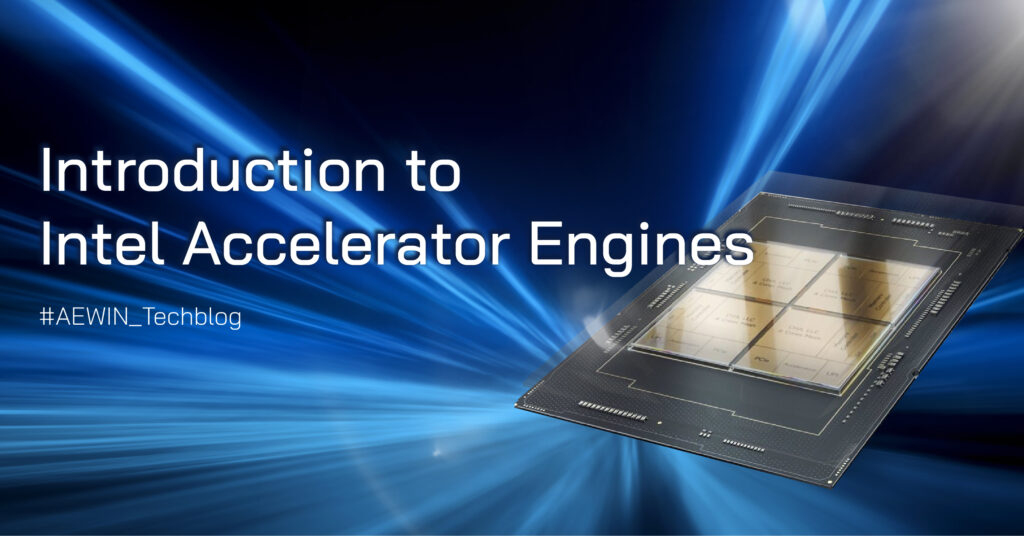
Background
Exponential growth of the data has been a consistent trend. Diverse applications including AIoT, intellectual storage, AI powered cybersecurity, generative AI have been developed rapidly along with it. It is crucial to transmit, store, analysis, and make use of them in a smarter way. Innovative technologies, Intel Accelerator Engines that will be introduced in this Tech Blog, help to accomplish complex tasks of data center, cloud, and edge with better TCO.
Introduction of Intel Accelerator Engines
Intel Xeon Scalable processors are designed for data-intensive use cases and there are Intel Accelerator Engines embedded for higher performance, higher efficiency, strengthened data security, lower cost, and lower energy consumption. Here we would introduce the Intel Accelerator Engine that is beneficial to Network, Security, Storage, AI, High Performance Computing (HPC), and Analytics.
- Intel QuickAssist Technology, Intel QAT
The latest 4th and 5th Gen Intel Xeon processors are with Intel QAT which can offload compute-intensive workloads of cryptography and data compression/decompression operations from the CPU. It helps to reduce CPU utilization and significantly enahnce the performance of networking, storage, security, HPC, and analytics.
- Intel Data Streaming Accelerator, Intel DSA
Intel DSA delivers high performance for networking, storage, analytics and data-intensive workloads by optimizing transmission and speeding up streaming data movement. It offloads compute-intensive operations from the CPU and lower the overall latency with reduced cost.
- Intel Dynamic Load Balancer, Intel DLB
Apart from Intel QAT and Intel DSA, Intel DLB is also one of the Intel Network Engines to help move data faster. Intel DLB balances and distributes network traffic across CPU cores and optimize the performance of data streaming, packet processing and compute-intensive networking tasks.
- Intel Volume Management Device (Intel VMD)
Intel VMD is another Intel storage engines that can unleash the performance of the NVMe storage solution. It supports direct control and management of NVMe SSDs from the PCIe bus. Intel VMD Direct Assign can reduce storage latency and increase bandwidth as it allows an Intel VMD Domain to be directly assigned to a VM.
- Intel In-Memory Analytics Accelerator, Intel IAA
Intel IAA speeds up big data analytics by scanning and filtering large datasets within queries to offload work from cores. It accelerates compression and decompression for faster data transfers and analytics workload processing with better energy efficiency and lower expense.
- Intel AMX & Intel AVX-512
Regarding AI/HPC acceleration, there are Intel Advanced Matrix Extensions (Intel AMX) which improves deep learning training/inference on the CPU and a set of new instructions called Intel Advanced Vector Extensions (Intel AVX-512) that can boost performance for machine learning workloads.
- Further Intel Security Engines: Intel SGX, Intel TDX, Intel PFR
In addition to QAT, there are further security engines for enhanced protection and strengthened defenses. Intel Software Guard Extensions (Intel SGX) isolates sensitive data and protect them from attack while Intel Trust Domain Extensions (Intel TDX) enable a trusted domain in a virtual machine (VM). Intel Platform Firmware Resilience (Intel PFR) ensure firmware integrity against disruption.
Summary
Intel Accelerator Engines are beneficial to address the growing demand for high-performance and energy-efficient solutions from data centers to edge devices. They enhance overall system performance, efficiency, and the ability to meet the critical requirements of modern computing workloads.